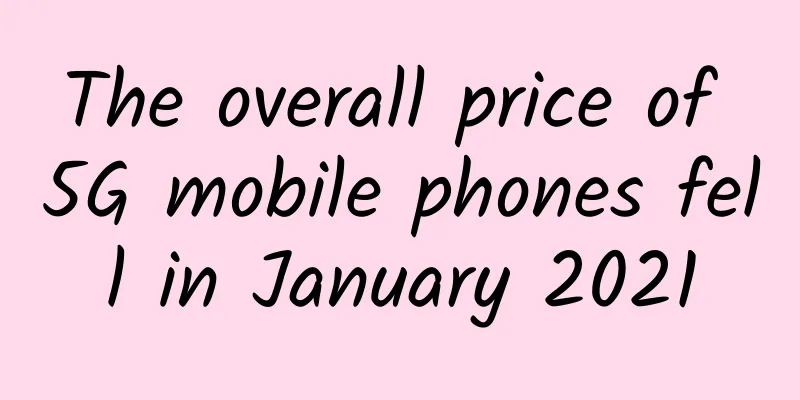From the practice of operators, why "intelligent multi-cloud" has become the key to the success of cloud strategy

|
If the symbol of the second industrial revolution was "power on", the symbol of the fourth industrial revolution we are ushering in is "cloud". The famous consulting firm Deloitte mentioned in its "Successful Path and Practice of Comprehensive Cloud Migration for Enterprises" that the cloud, in the form of online public services, makes computing power and artificial intelligence become inclusive technology, a carrier for the digital transformation of enterprises, and even the foundation for the digital development of the whole society. Driven by the internal demands for business transformation and the external pressure of the COVID-19 pandemic, enterprises are inevitably migrating to the cloud, especially to multiple clouds, and the process has greatly accelerated. According to IDC statistics, by the end of 2021, 80% of the surveyed companies will double the pace of cloud migration. "A nine-story tower starts with a pile of earth." Cloud is the foundation of digitalization, and the network is the basis of cloud. As enterprises move to the cloud, the protagonists shift from Internet-native enterprises to traditional industry enterprises. Cloud technology gradually penetrates core systems, organizational processes, and ecological data, and puts forward higher requirements for networks that connect to and enable the cloud. For operators, cloud-network integration has become the basic form of providing digital services and will also be the key to the future development of the entire industry.
So, facing this overwhelming trend, how can operators seize the window of opportunity of the "cloudification" revolution, build up B2B business competitiveness, and achieve a positive business cycle? Embracing "intelligent multi-cloud" will be the only way. Operators have a promising future in developing cloud servicesWhether it is the digital economy that stands out amidst the downward pressure on the economy, or the fact that more than 50 countries have adopted digitalization as a national strategy, it is enough to prove that "embracing digitalization" has become a major theme in today's world. Specifically for the ICT industry, the industry's digital transformation will bring huge market opportunities. According to a third-party industry consulting report, it is expected that by 2023, there will be a market space of 15 trillion US dollars, with an annual compound growth rate of 17.5%. The dividends of industrial digitalization will be the main source of new growth for operators' B2B in the future. Cloud has become the foundation of industrial digitalization. Without cloud, there is no digitalization. For this reason, cloud business will be the core for operators to seize the opportunities of the times and obtain the dividends of the times. In fact, many leading operators have also realized this. Combining industry analysis reports and operator financial reports, we can see that European and Asia-Pacific operators are typical representatives of cloud business, which has achieved good growth. The common feature behind them is that they have taken "cloudification" as their future development strategy and have clarified the strategic direction. For example, China Mobile proposed a "cloud transformation" strategy and entered the first camp of Chinese cloud service providers in three years. It achieved a growth rate of 350% in 2020, and its cloud service revenue has exceeded US$1.4 billion. Similarly, benefiting from the "cloud first" strategy and "cloud integration" strategy, the cloud business of Deutsche Telekom and Japan's NTT both grew significantly in 2020. From another perspective, operators have the conditions to achieve "one line, multiple clouds", while OTT can only achieve "one cloud, multiple lines". A senior industry expert pointed out to C114 that no cloud service provider can meet all the application needs of enterprises. According to the trend of enterprises going to the cloud, multi-cloud access methods of public cloud, private cloud and hybrid cloud are increasingly becoming the mainstream choice and are considered to have a better return on investment. In other words, the operator's "one line, multiple clouds" is more in line with future development requirements and is a key advantage. In addition, operators also have resource advantages such as differentiated dedicated line access services, localized system integration capabilities, deterministic network experience, Overlay+Underlay collaboration mechanism, and edge computer rooms. This shows that there is a promising future for operators to develop cloud services. Build a target network with "Intelligent Multi-Cloud" as the typical featureThe saying "a good cloud goes with a good network, and a good network promotes a good cloud" has become popular. The high-quality value of the cloud depends on a high-performance network. The development of operators' cloud services is also inseparable from the top-level design and strategic planning of the target network. Focusing on supporting enterprises to "go to the cloud" and building a future target network with "intelligent multi-cloud" as the typical feature will be the key to the success of operators' cloudification strategy. The so-called "intelligently connected multi-cloud" has two elements. First, there must be multi-cloud infrastructure, including edge cloud, public cloud, private cloud, etc., to achieve one-number access to the cloud and self-service ordering; second, there must be a multi-cloud aggregation network to achieve differentiated enterprise access, end-to-end automation, one-hop access to the cloud and multi-cloud convergence. How did those leading operators do it? Take China Telecom as an example. According to public information, in 2020, it proposed Cloud-Network Integration 2030, and clarified the four positionings of cloud-network integration, namely "network is the foundation, cloud is the core, network follows the cloud, and cloud and network are integrated"; and changed the organizational structure, such as renaming the original planning and construction department "Network Development Department" to "Cloud-Network Development Department", and merging the Enterprise Informatization Department and the Network Operation and Maintenance Department to form the "Cloud-Network Operation Department". China Telecom Chairman Ke Ruiwen also clearly mentioned in public that the essential connotation and core architecture of the new information infrastructure is "cloud-network integration." In order to implement the cloud-network integration strategy, China Telecom proposed a cloud-network planning layout of "2+4+31+X+O". 2 refers to two central data centers, 4 refers to data centers in four key areas, 31 refers to 31 provincial data centers, X represents edge nodes, and O represents overseas nodes. China Telecom uses large bandwidth to connect these data centers to form distributed clouds. It is both a network and a cloud. Once you enter the network, you enter the cloud. Another example is a provincial operator that has built a multi-cloud on-demand dedicated line network based on public cloud. This solution has three key points. The first is the multi-cloud converged network, which realizes the interconnection between multiple public clouds (including its own public cloud) through the SRv6+E virtual network, and connects the operator's own traditional dedicated line to multiple clouds through the multi-cloud converged network; the second is the cloud network aggregation platform, which opens the network capabilities to the cloud network aggregation platform through the SDN controller, and the cloud network aggregation platform connects with the third-party cloud management platform through the API interface, thereby mastering the B2B entrance and portal; the third is the system integration service on the end-user side, which empowers by creating a business ecosystem. Another provincial operator has created an integrated cloud, network and security service by aggregating multiple clouds with a government-enterprise private network. In this government-enterprise private network, it has enabled dedicated lines and SRv6 to achieve connections with its own public cloud and government cloud. Currently, the access methods that can be provided include 5G and virtual networks. On this basis, it slices by industry, including medical slice private networks, education slice private networks and police slice private networks, ensuring large bandwidth, high reliability and secure isolation. In addition, four scheduling capabilities of cloud-network integration have been created, including cloud-network scheduling (minute-level activation), network-cloud scheduling (one-hop access to multiple clouds), network-network scheduling and cloud-cloud scheduling. Operators promote cloud-network integration, which not only serves the national strategy, but is also a necessity to promote the digital transformation of the industry, and a strategic opportunity to achieve sustainable business development. From the above cases, we can see that strategic layout and cloud-network construction around "intelligent multi-cloud" have become a major direction, which will help operators transform from differentiated cloud access service providers to multi-cloud management service providers, and realize a new business situation of "network-driven cloud and cloud-driven network". |
<<: Advantages of 5G technology in future US military networks
>>: Let’s talk about the new features of HTTP/3. Why did you choose to use the UDP protocol?
Recommend
[11.11] UUUVPS special VPS annual payment starts from 128 yuan, Hong Kong/US 9929/4837/CN2 and other options
UUUVPS (SanYou Cloud) is a registered Hong Kong c...
IDC: China's business intelligence software market is expected to reach US$1.33 billion by 2025
According to the "China Business Intelligenc...
Once together, now separated, 5G baseband will connect everything
2019 is the first year of 5G, but SoC and 5G base...
OneTechCloud: 25.2 yuan/month KVM-1GB/20G SSD/5M unlimited traffic/Hong Kong CN2
OneTechCloud is a Chinese hosting company establi...
What Every Developer Should Know About TCP
Why do you need to place servers geographically c...
The decline in operators' ability to generate revenue will affect the rapid deployment of 5G
The report on the economic operation of the commu...
BuyVM Las Vegas VPS simple test
BuyVM has been shared many times in the blog. It ...
Six great ways to improve your web page loading time
【51CTO.com Quick Translation】 Aberdeen Group once...
Stay true to our original aspiration and keep moving forward | What did they gain from their journey to Huawei's ICT ecosystem?
[51CTO.com original article] Summer is coming to ...
In the era of full intelligence, adapt with intelligence | H3C shares its network innovation blueprint at the 4th Future Network Development Conference
From August 14 to 15, New H3C Group, a subsidiary...
XSX: Japan/Singapore dedicated servers 50% off, E3-1230v3/16GB/480G SSD only $57
XSX.net recently launched a 50% discount promotio...
SpartanHost: Seattle High Defense E5 series KVM restock, 1G memory, 15GB NVMe hard drive, 2TB/10Gbps monthly payment of $5
SpartanHost is a well-known foreign VPS hosting c...
Without big data and artificial intelligence, you may not be able to eat if you are hungry
【51CTO.com original article】 Friends born in the ...
What is the role of NB-IoT in 5G networks?
Exploring the role of narrowband IoT in 5G networ...
Ministry of Industry and Information Technology: 5G package users have exceeded 350 million, China Mobile ranks first with more than 180 million users
At present, the number of users of 5G packages ha...









